
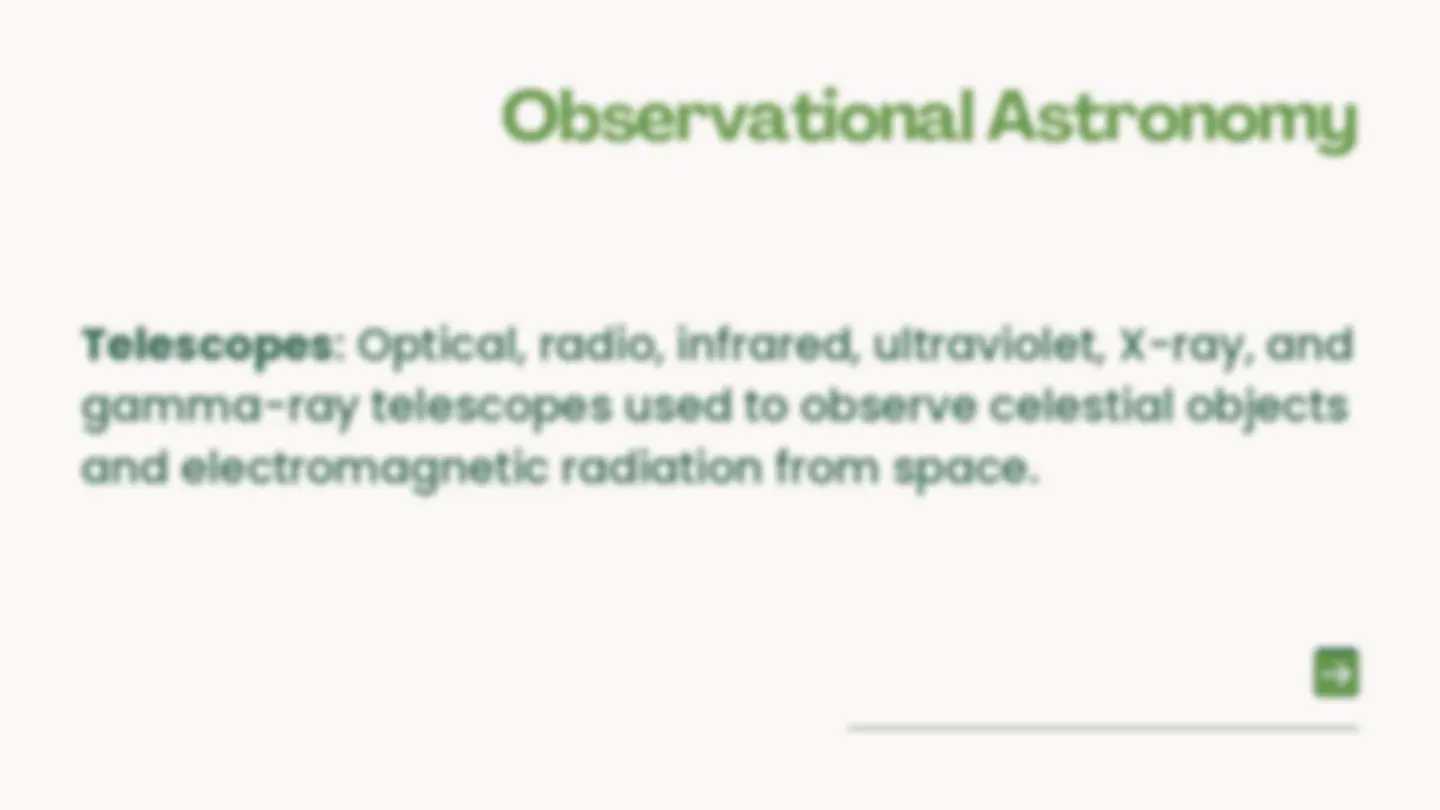
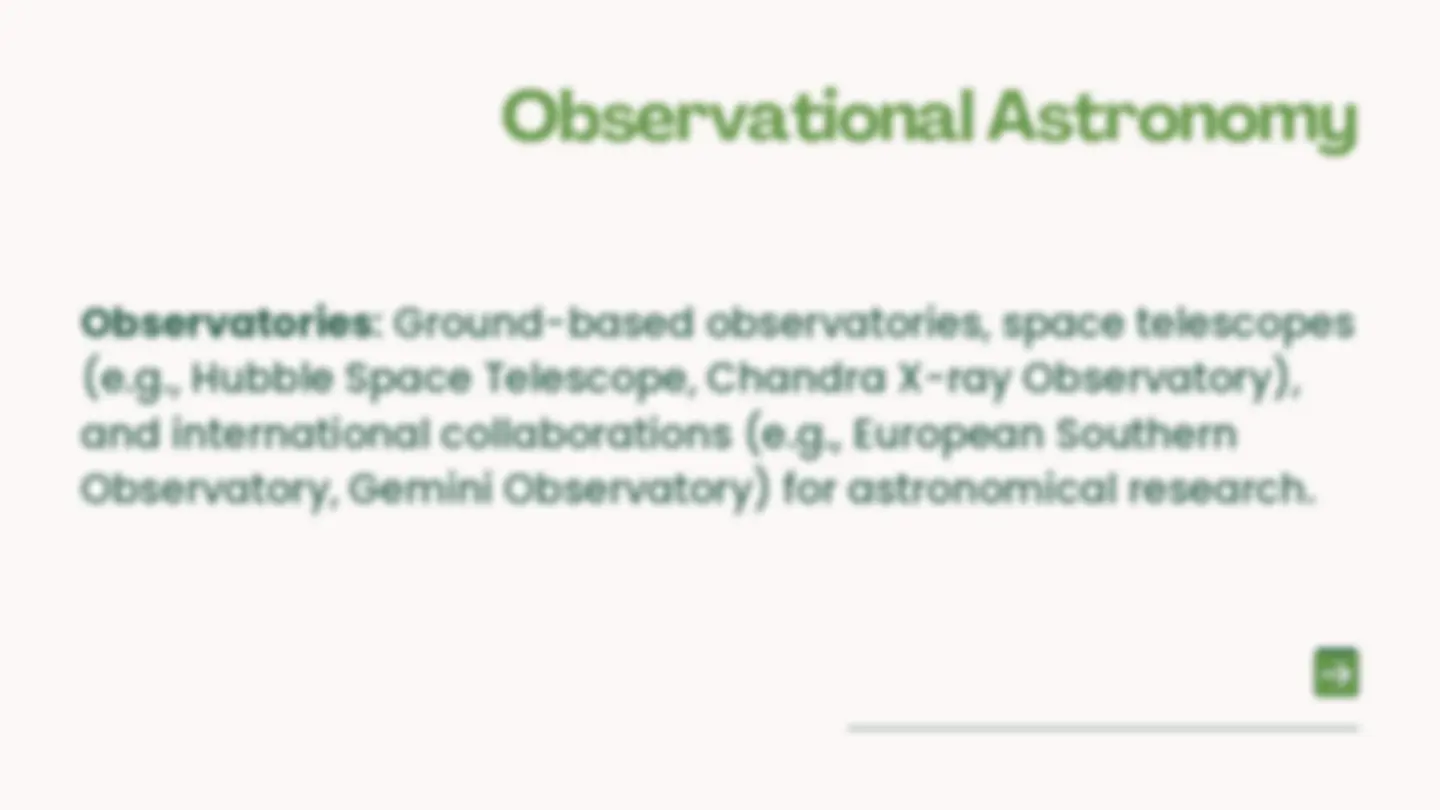
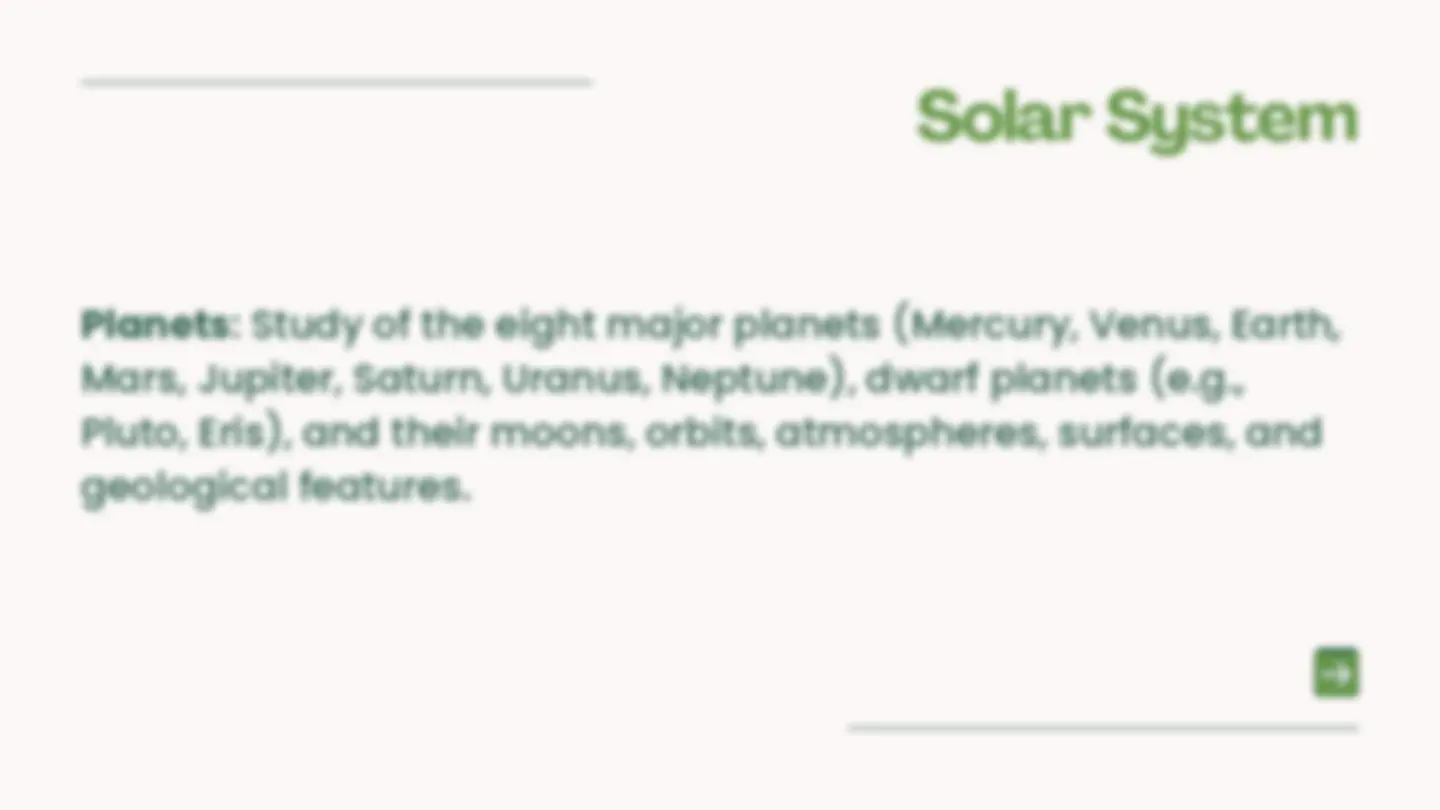
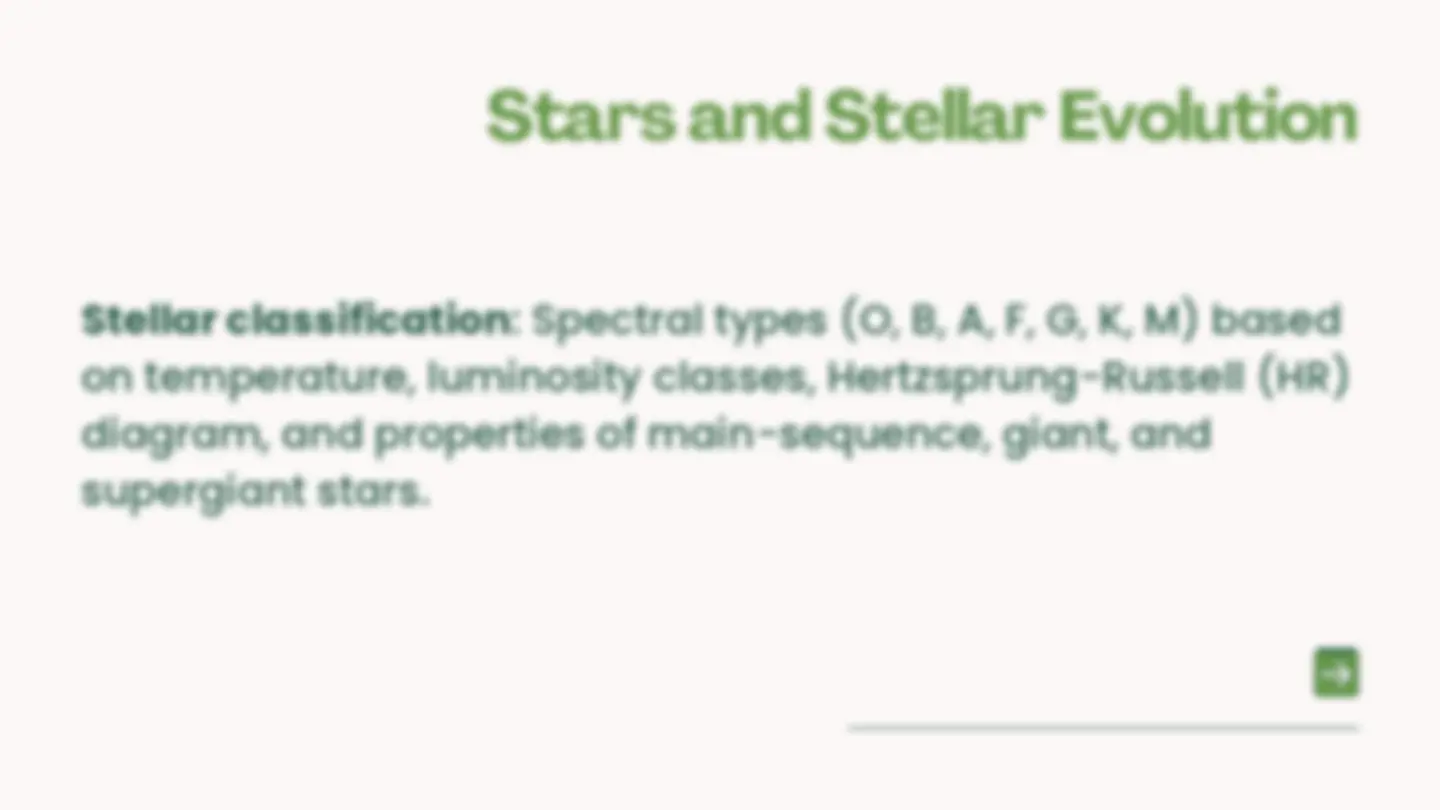
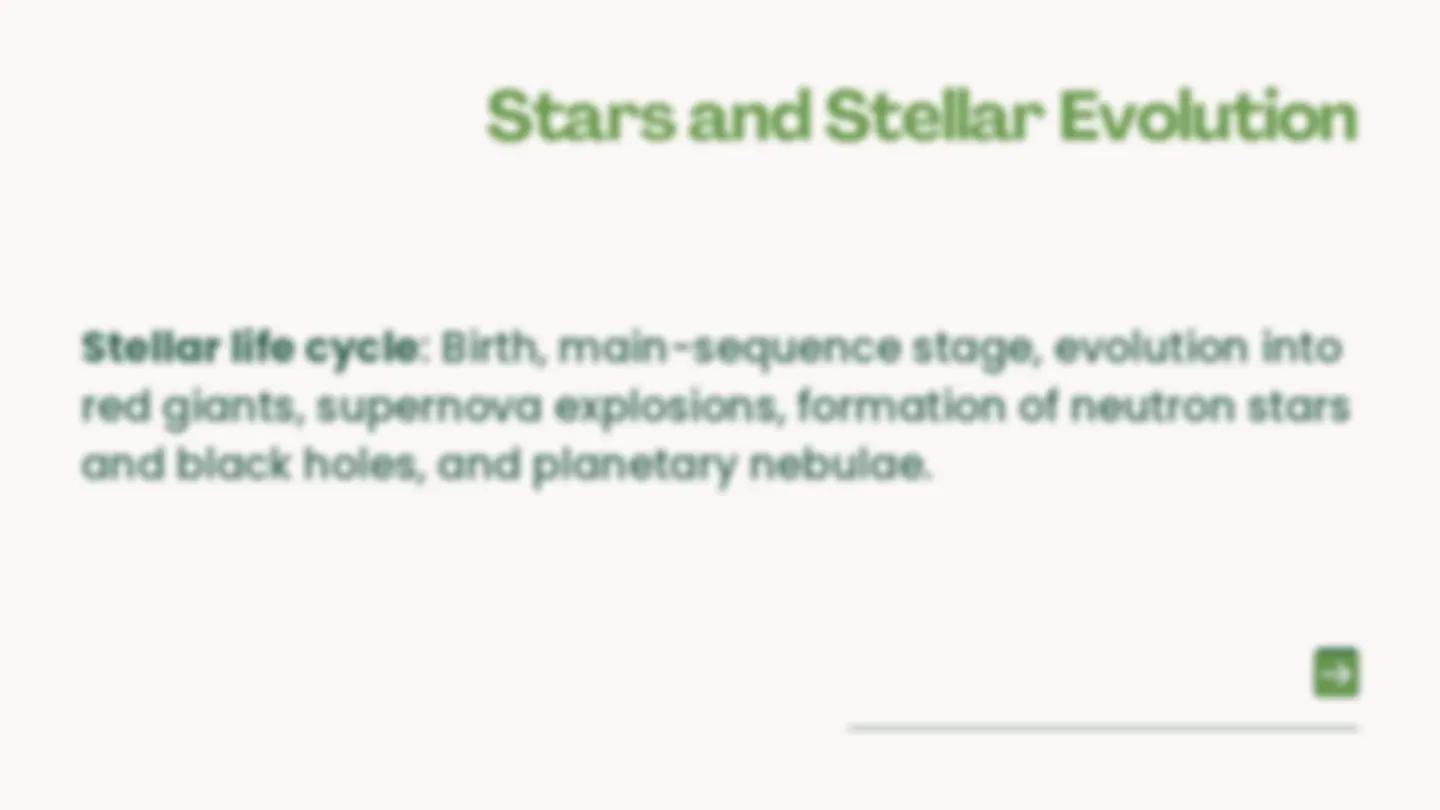
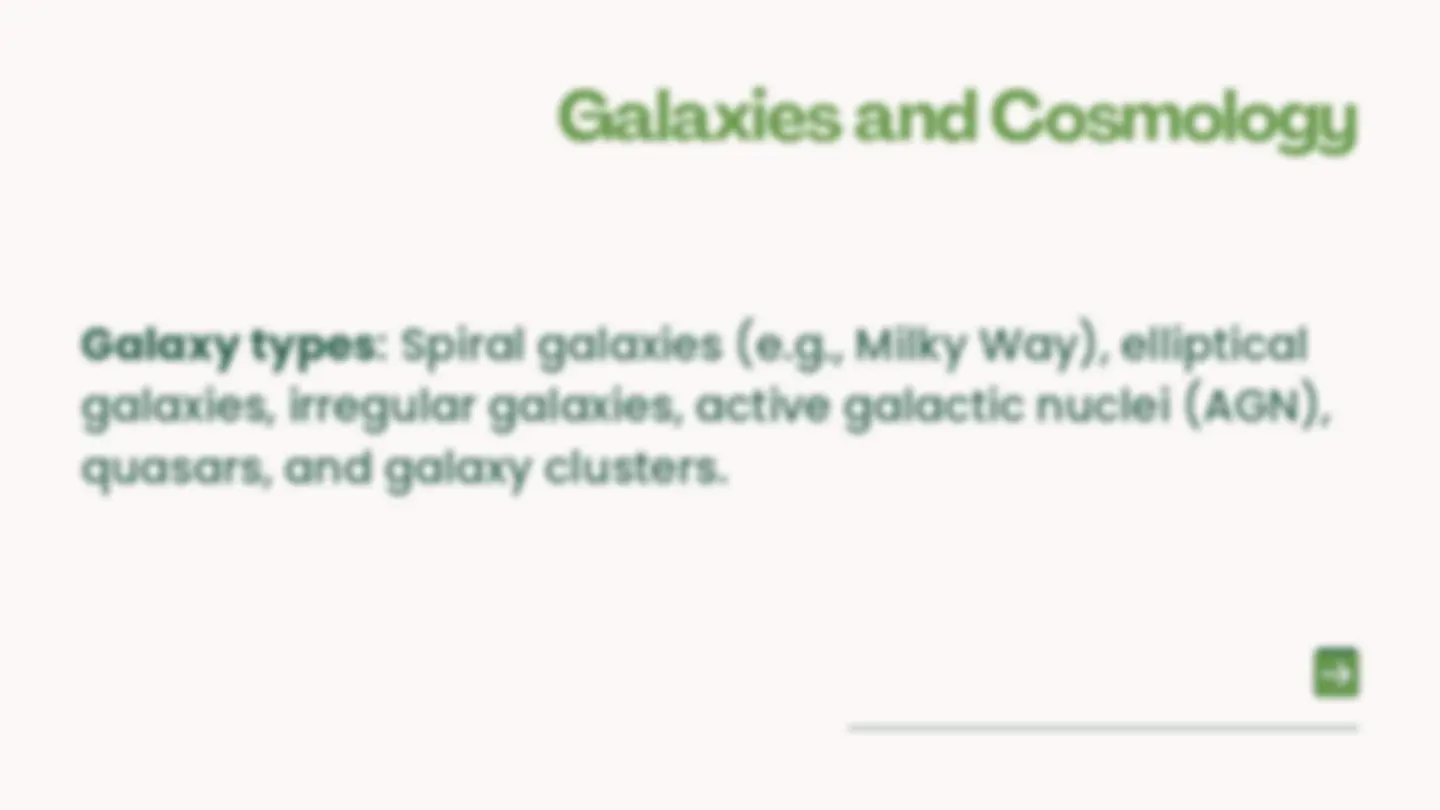

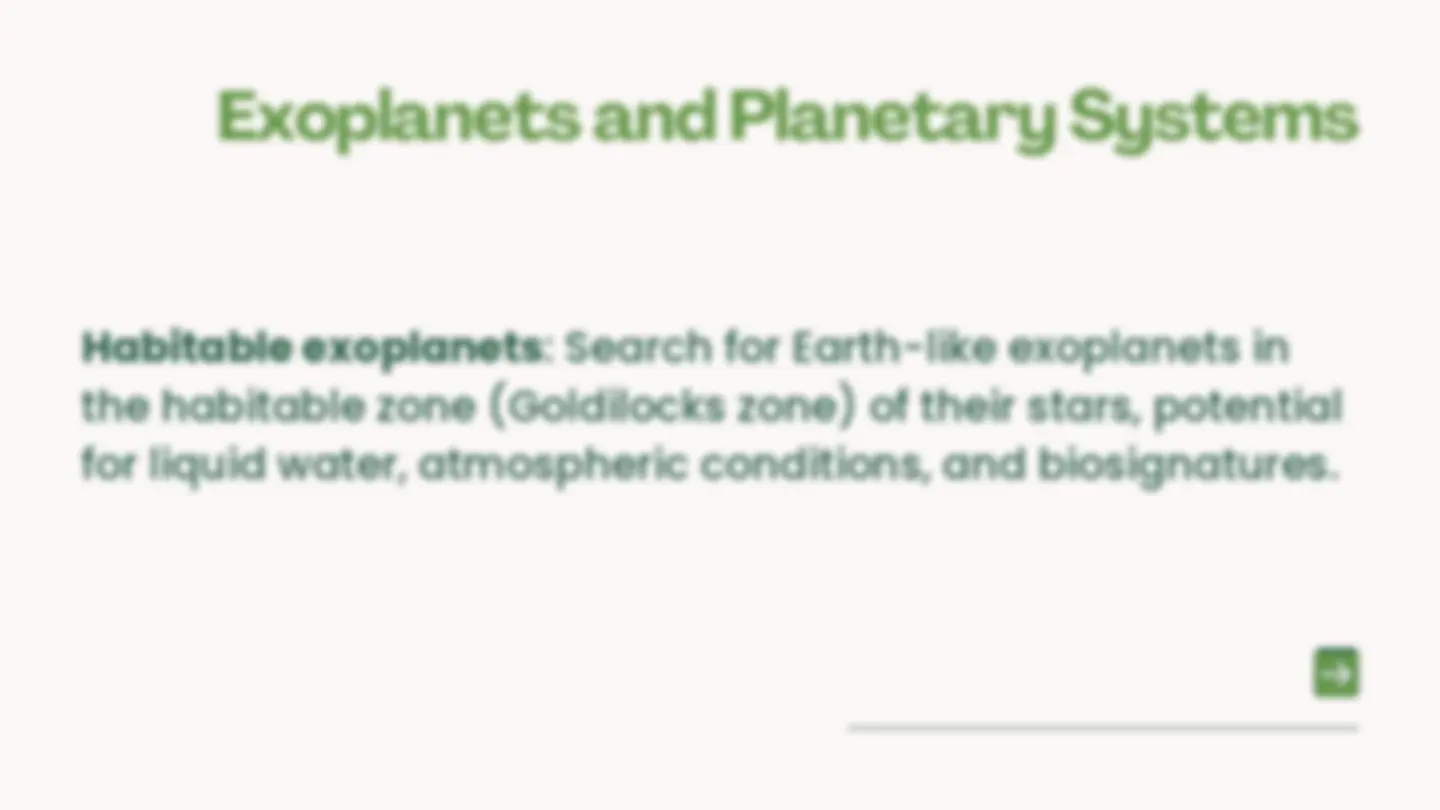
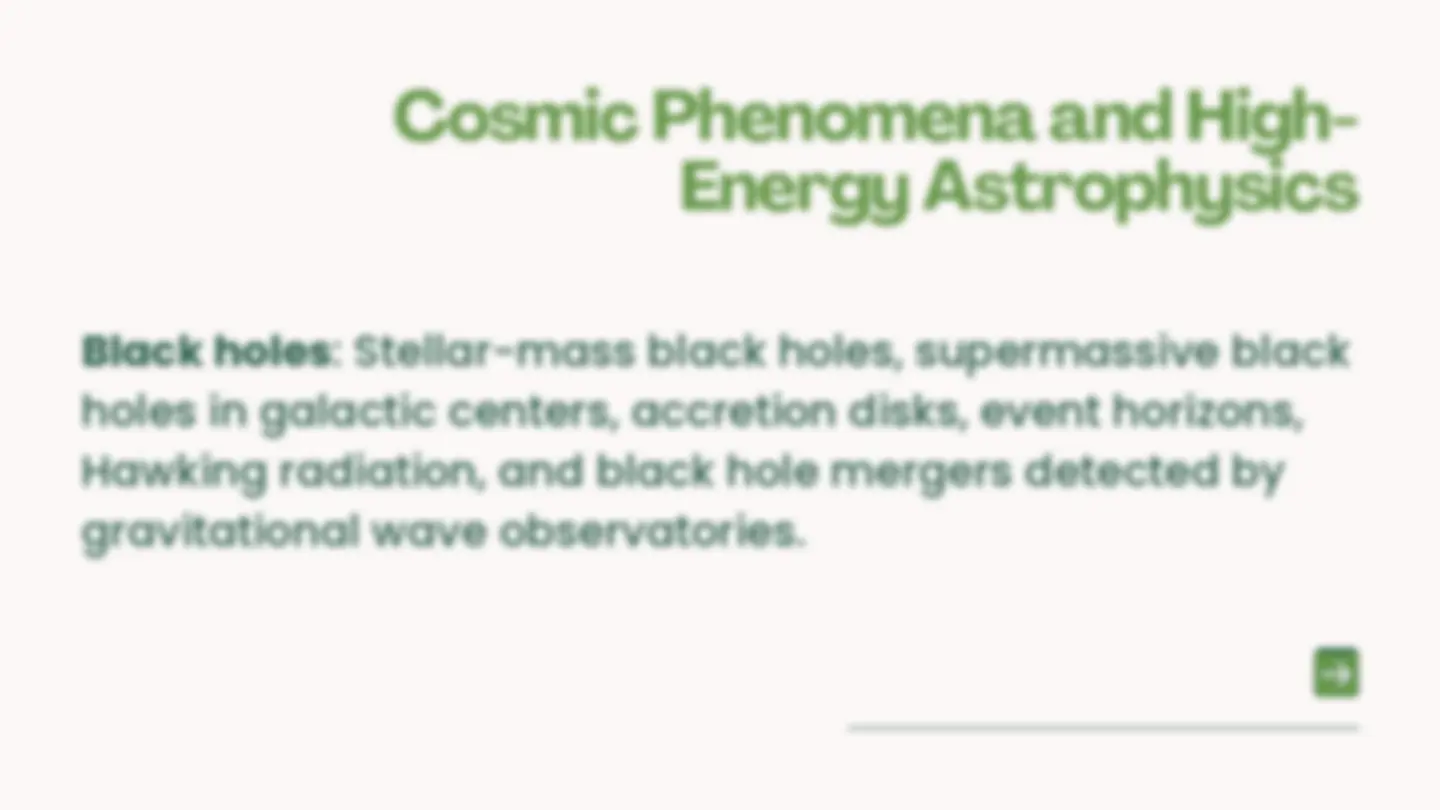
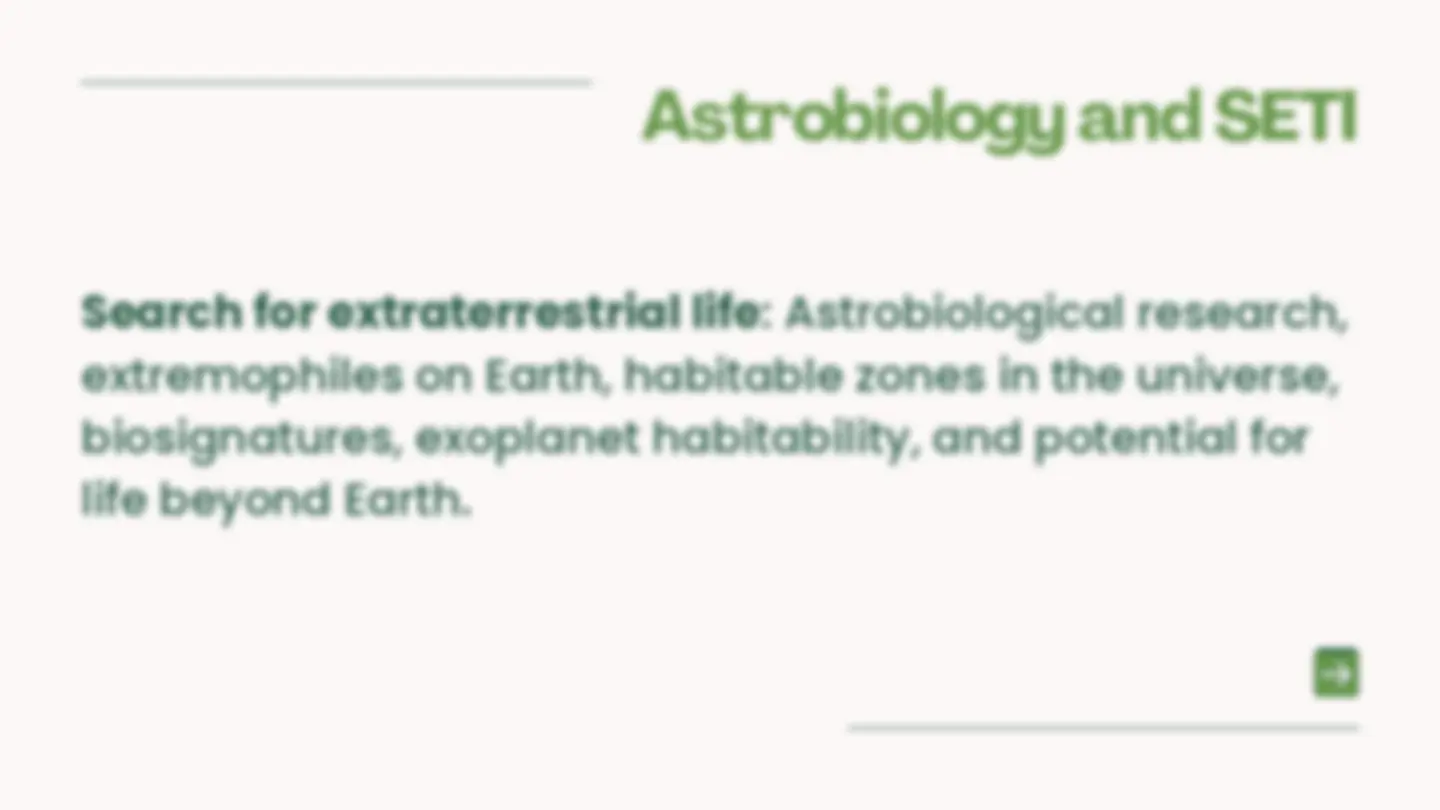
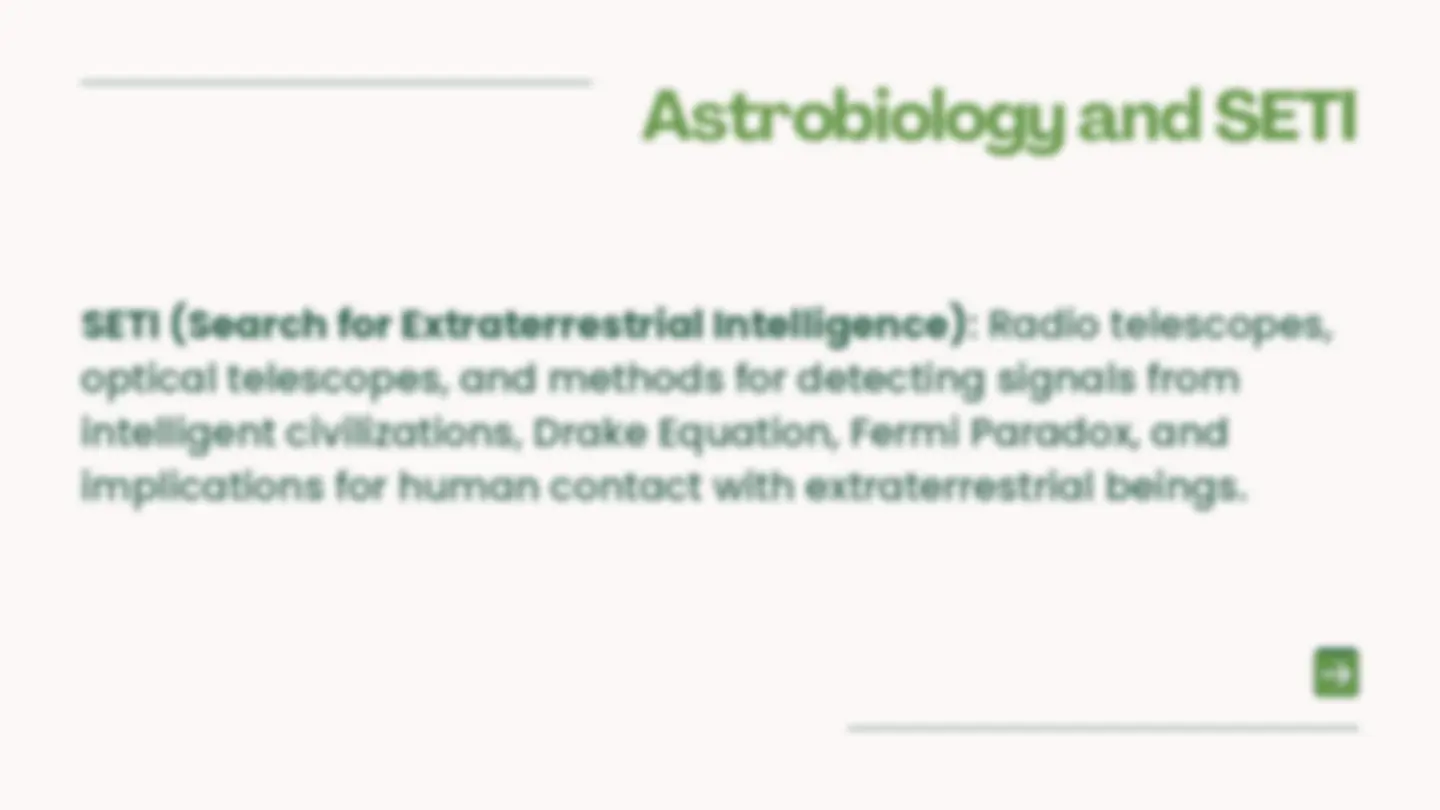




Study with the several resources on Docsity

Earn points by helping other students or get them with a premium plan


Prepare for your exams
Study with the several resources on Docsity

Earn points to download
Earn points by helping other students or get them with a premium plan
Community
Ask the community for help and clear up your study doubts
Discover the best universities in your country according to Docsity users
Free resources
Download our free guides on studying techniques, anxiety management strategies, and thesis advice from Docsity tutors
This presentation provides a comprehensive overview of astronomy, focusing on the study of celestial objects and phenomena.
Typology: Slides
1 / 21

This page cannot be seen from the preview
Don't miss anything!














Presented by: Abigail Atiwag
Astronomy is the scientific study of celestial objects, phenomena, and the universe as a whole. It encompasses a wide range of topics related to space, galaxies, stars, planets, moons, asteroids, comets, cosmic phenomena, and the origins and evolution of the universe. Here are key topics in astronomy:
Observational Astronomy Observatories : Ground-based observatories, space telescopes (e.g., Hubble Space Telescope, Chandra X-ray Observatory), and international collaborations (e.g., European Southern Observatory, Gemini Observatory) for astronomical research.
Solar System Planets : Study of the eight major planets (Mercury, Venus, Earth, Mars, Jupiter, Saturn, Uranus, Neptune), dwarf planets (e.g., Pluto, Eris), and their moons, orbits, atmospheres, surfaces, and geological features.
Stars and Stellar Evolution Star formation : Protostars, star nurseries (e.g., Orion Nebula), molecular clouds, gravitational collapse, and formation of star clusters and associations.
Stars and Stellar Evolution Stellar classification : Spectral types (O, B, A, F, G, K, M) based on temperature, luminosity classes, Hertzsprung-Russell (HR) diagram, and properties of main-sequence, giant, and supergiant stars.
Galaxies and Cosmology Galaxy types : Spiral galaxies (e.g., Milky Way), elliptical galaxies, irregular galaxies, active galactic nuclei (AGN), quasars, and galaxy clusters.
Galaxies and Cosmology Galaxy formation and evolution : Hierarchical structure formation, galaxy mergers, galactic dynamics, dark matter, galactic cannibalism, and galactic collisions.
Exoplanets and Planetary Systems Exoplanet detection methods : Radial velocity, transit photometry, direct imaging, gravitational microlensing, and astrometry used to discover and characterize exoplanets.
Exoplanets and Planetary Systems Habitable exoplanets : Search for Earth-like exoplanets in the habitable zone (Goldilocks zone) of their stars, potential for liquid water, atmospheric conditions, and biosignatures.
Cosmic Phenomena and High- Energy Astrophysics Neutron stars and pulsars : High-density remnants of supernova explosions, pulsating radio sources, neutron star mergers, and exotic phenomena like magnetars and gamma-ray bursts.
Cosmic Phenomena and High- Energy Astrophysics Cosmic rays, gamma-ray bursts, supernovae, quasars, active galactic nuclei, gamma-ray bursts, fast radio bursts (FRBs), cosmic magnetism, and high-energy astrophysical processes.
Astrobiology and SETI SETI (Search for Extraterrestrial Intelligence) : Radio telescopes, optical telescopes, and methods for detecting signals from intelligent civilizations, Drake Equation, Fermi Paradox, and implications for human contact with extraterrestrial beings.
Astronomy is a dynamic and interdisciplinary field that explores the mysteries of the cosmos, expands our understanding of the universe, and addresses fundamental questions about the nature of space, time, matter, and energy. It combines theoretical models, observational data, computational simulations, and technological advancements to unlock the secrets of the cosmos and inspire awe and wonder about the vastness of space.